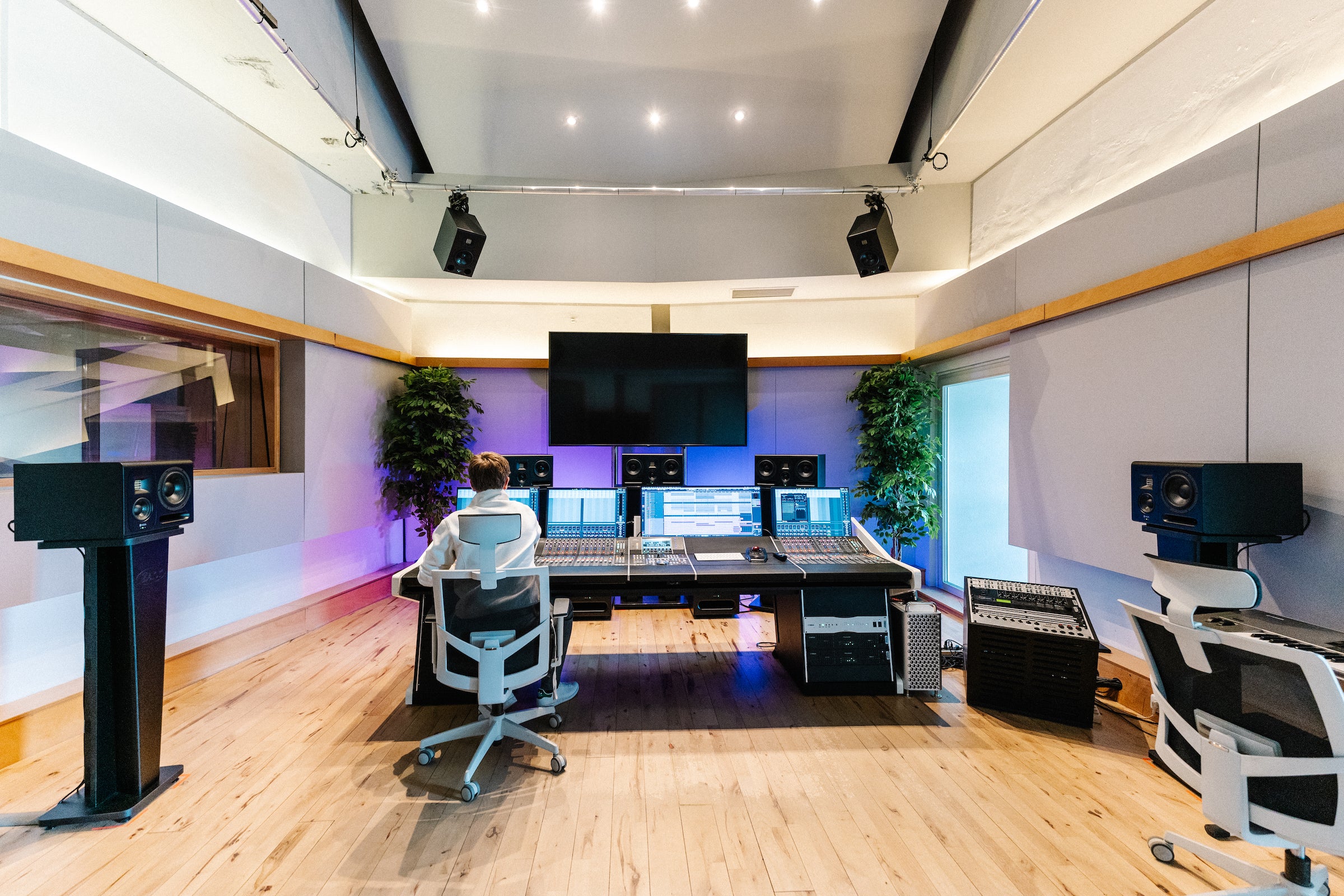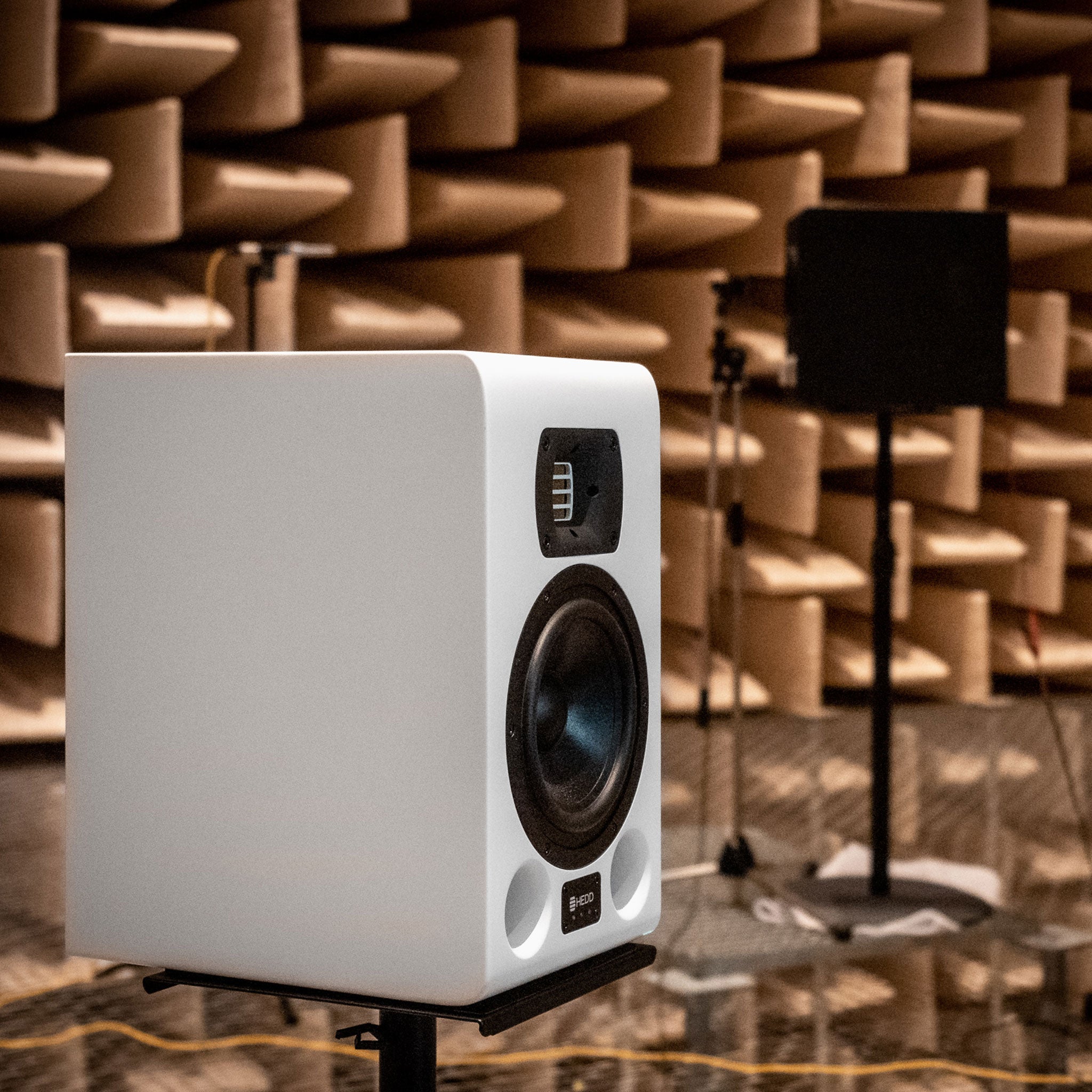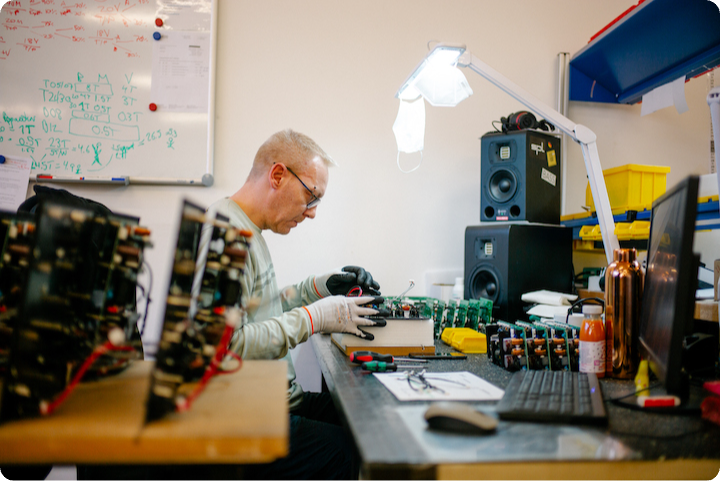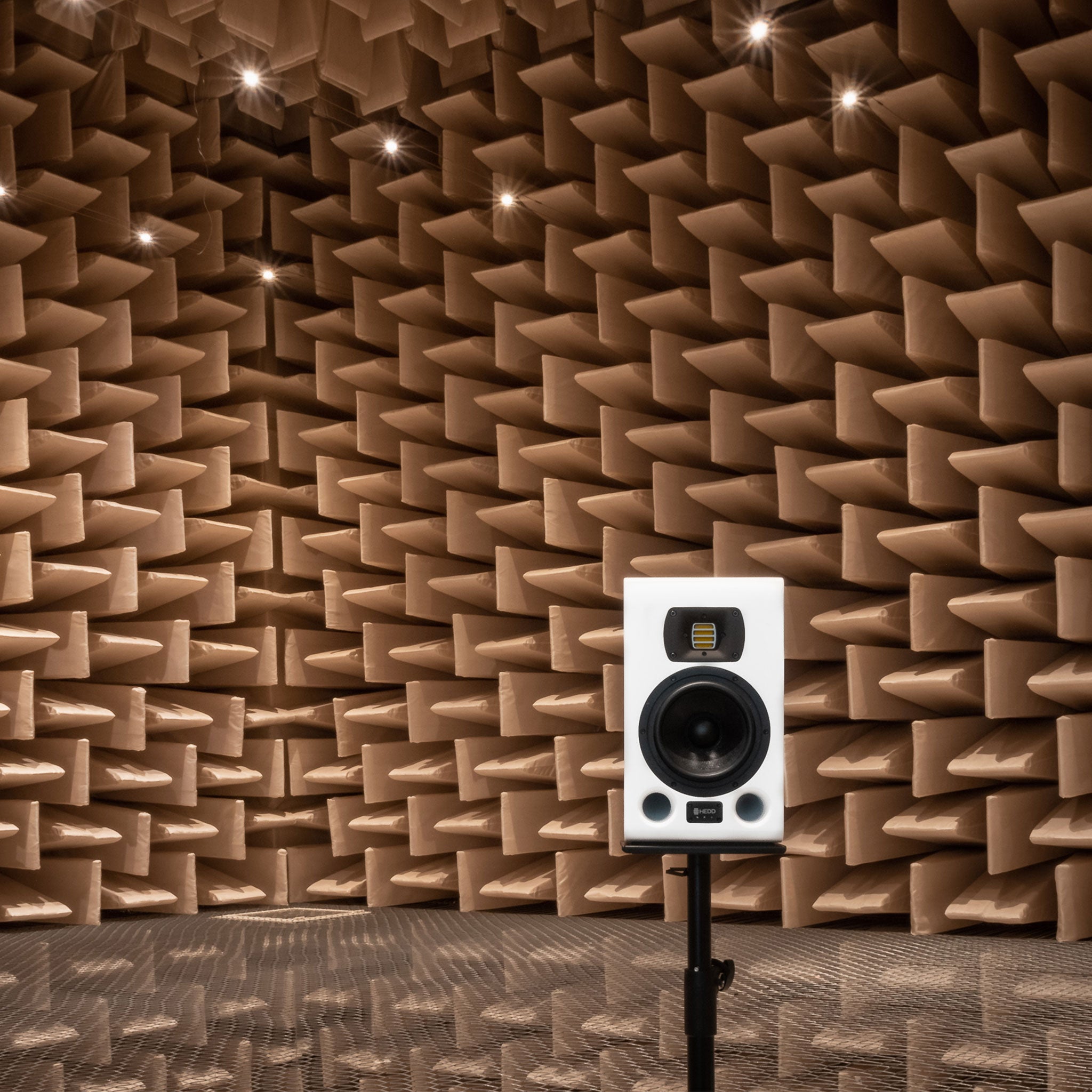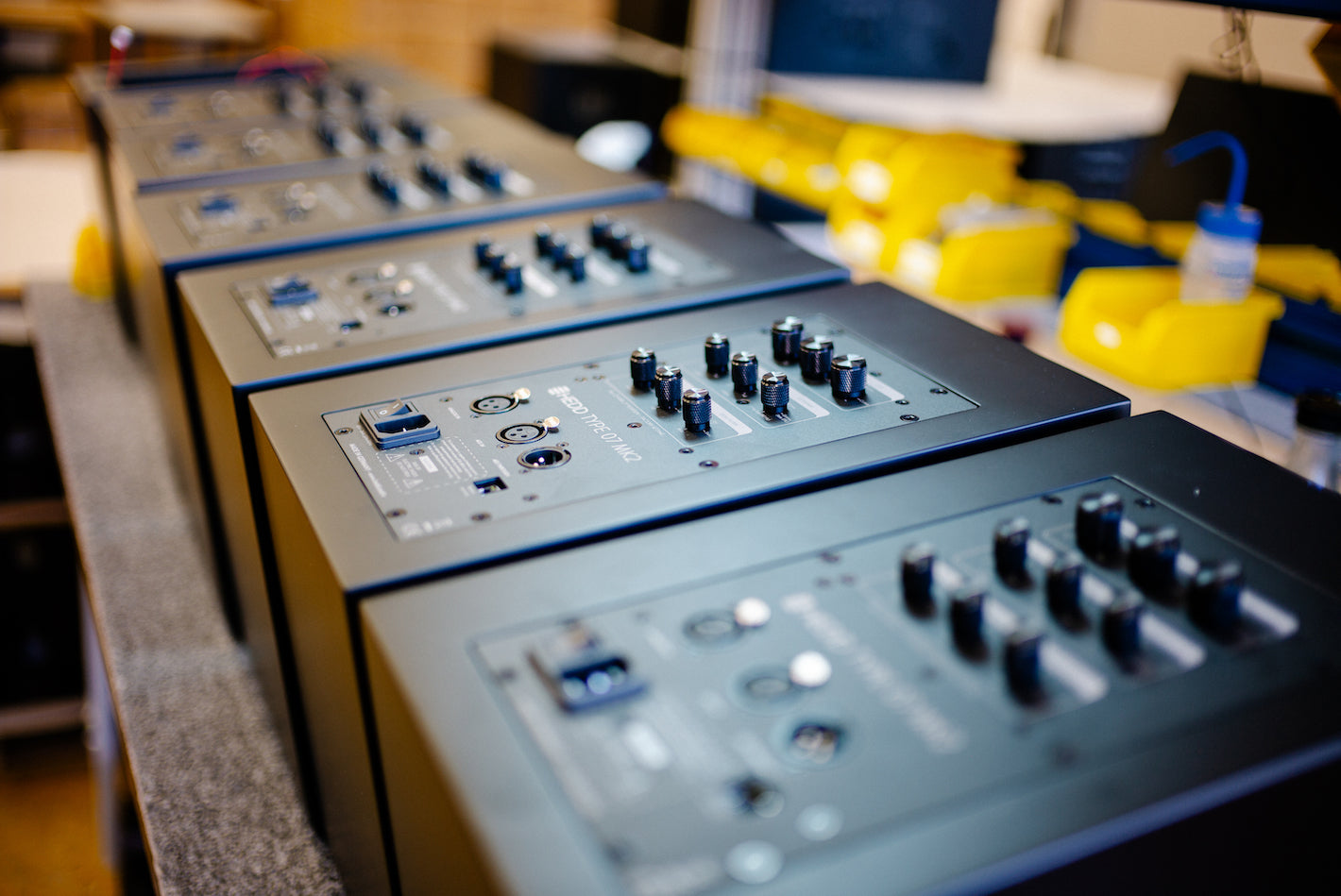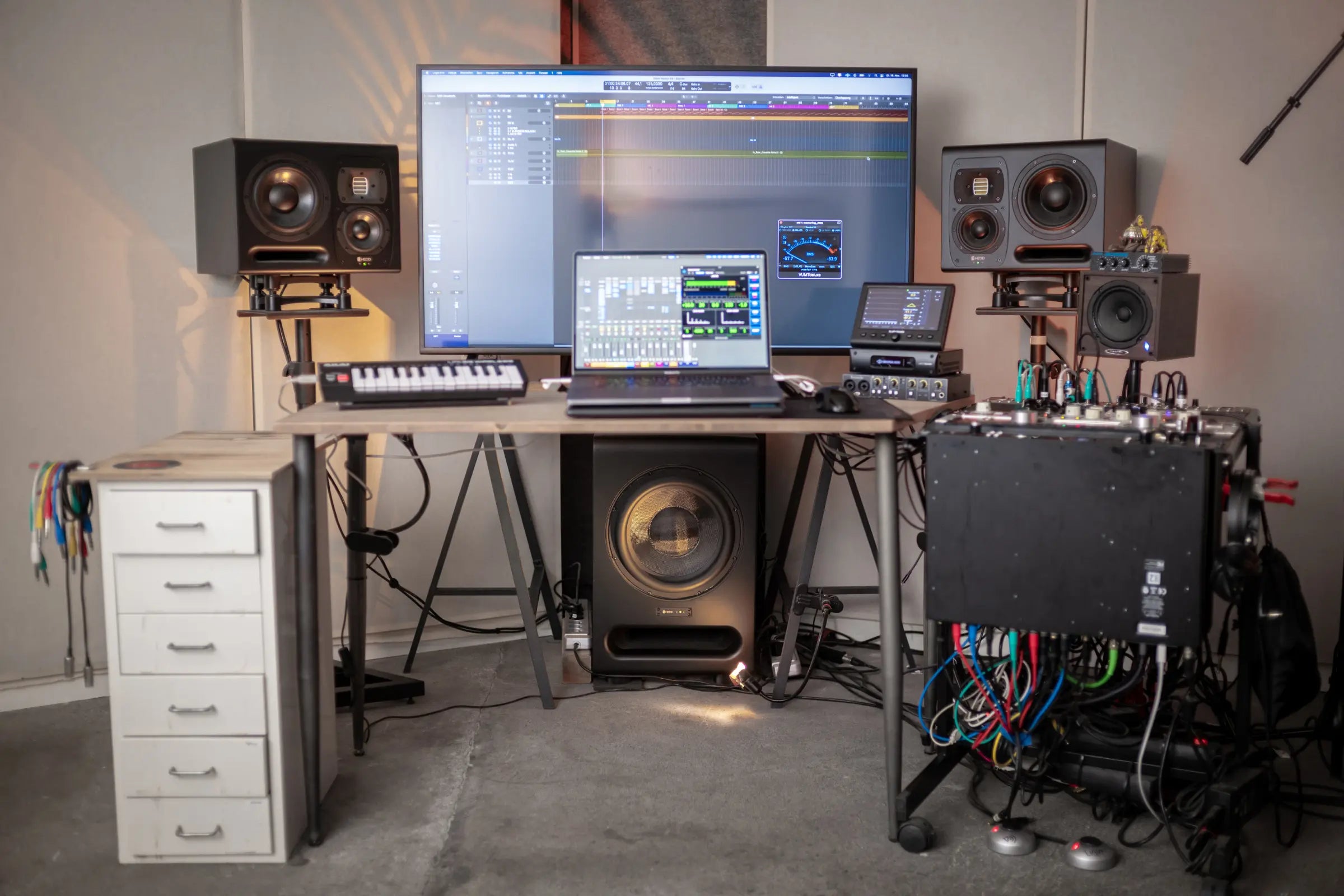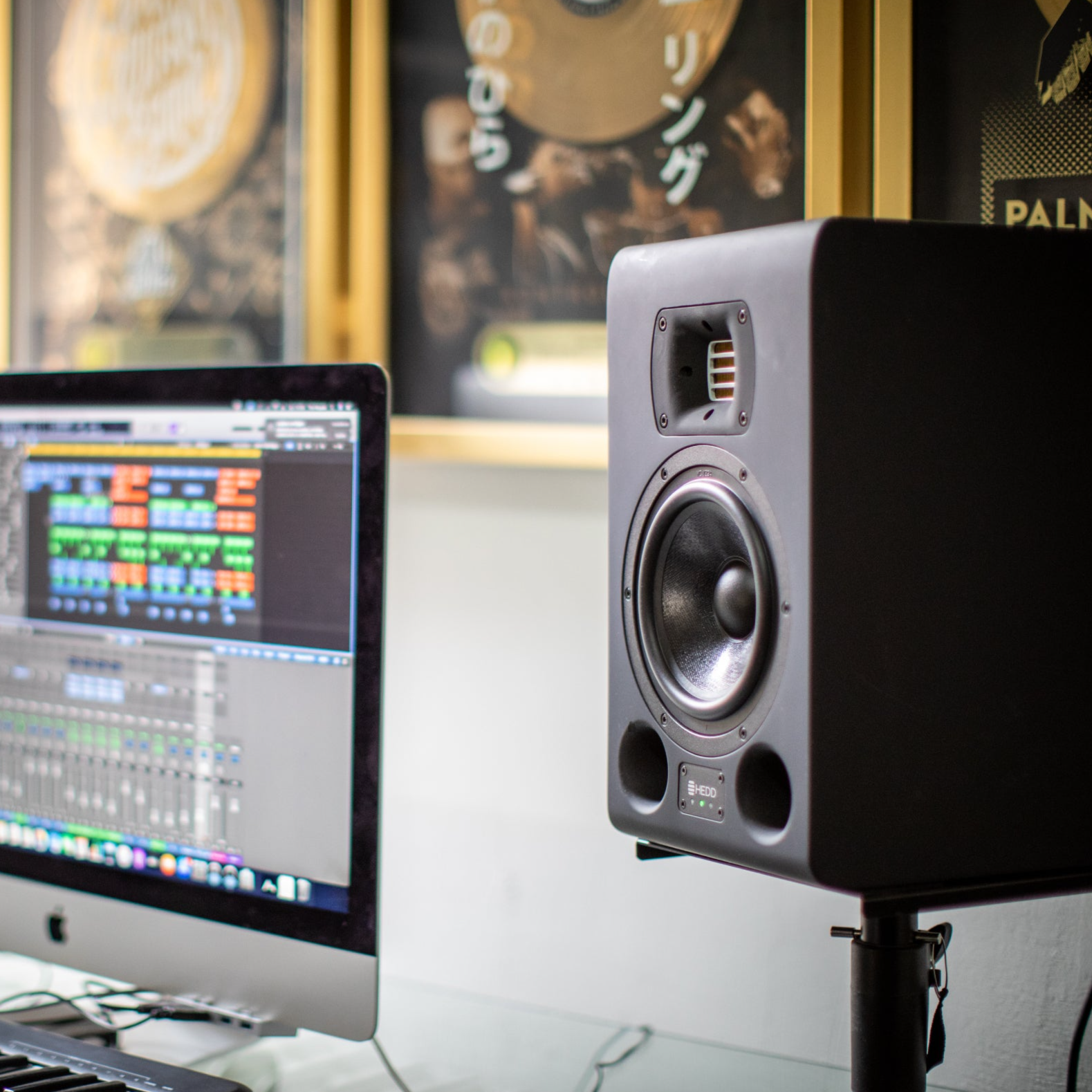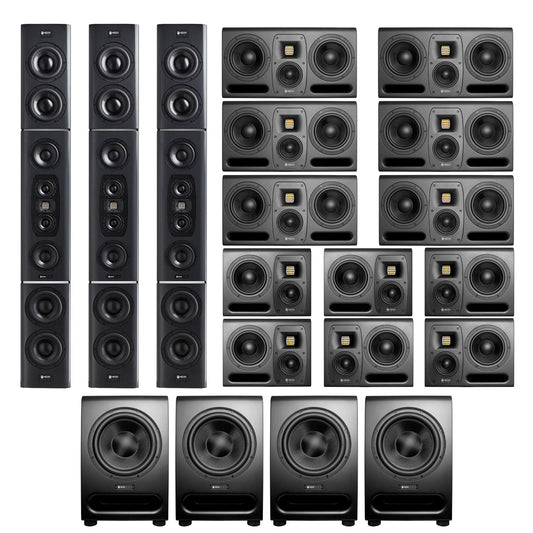HEDD's approach to Dolby Atmos®: 'Right in Time'
The HEDD MK2 monitor range consists of 2- and 3-way monitors as well as subwoofers that are trusted by studios and professional around the world for their immersive setup needs.
We work with engineers and studios worldwide to realise diverse types of setups, from compact studios for composition and engineering to larger spaces that combine our 3-way midfield monitors, subwoofers and custom Tower Mains for education and soundtracking.
We have also partnered with IsoAcoustics, industry leaders in sound isolation, to develop a range of mounting solutions based around their V120 mount that makes it easy to setup any of our MK2 monitors in your space.
Whatever your Atmos or immersive needs are, we can help.

"HEDD speakers provide a highly satisfying experience in an Atmos environment. Extremely flat frequency response, the advantages of Atmos setup through various features, perfect balance between models. HEDD is already the best choice among available products for Atmos."
GLAB Studios
— Seoul, South Korea
At HEDD we think that immersive audio offers incredible potential for exploring new ways to work with music.
To ensure that a multichannel Atmos setup translates to the listener in the most transparent and emotional way, the time relationships between monitors must stay correct at all times and independent from the room acoustics and geometry.
It’s an accepted truth of professional audio design that due to their frequency-dependent behaviour, monitors deviate in their phase response. In practical terms this means that lower frequencies, such as bass, travel slower through the speakers than the middle and high frequencies regardless of whether or not a monitor is active or passive. This creates a distortion of the time relationships between frequencies and therefore affects how the audio coming out of the speakers is heard.
HEDD has focused on solving this common issue with the Lineariser, a DSP-enabled tool available in all our MK2 monitors. The Lineariser is an adapted Finite Impulse Response (FIR) filter that restores the original time relationships of the frequencies in the incoming signal within the monitor at the cost of some latency. As a result the transient response is improved and a better focused stereo localization achieved, which is key in an immersive setup.
In addition to the Lineariser, all HEDD MK2 monitors feature Closed or Ported functionality, which combines the best of two monitoring systems into one. Each MK2 monitor offers the option to switch between a closed or ported cabinet, providing the advantages of both: increased precision, transient response, and texture quality in Closed Mode or more impactful bass and enhanced headroom in Ported Mode. The benefits of each mode are multiplied in an immersive setup.
Lastly, we created a tool called Group Delay Compensation to achieve true sound integration and system-wide phase linearity between the MK2 monitors and BASS subwoofers. The tool helps compensate for the longer group delay of the subwoofers and removes standard problems such as smearing and disorientation that are often inherent in the use of traditional subwoofers.
We call this approach for Atmos Right in Time because we believe that the importance of accurate time relationships is essential to ensuring a truly immersive audio experience.
To be right in time across all frequencies is key in a Dolby Atmos setup where you have multiple monitors placed in a physical space (beneath, around, and above you) as well as multiple audio objects located within a three-dimensional space.
When perfectly aligned, audio objects in your Atmos mix will be sharper as the relationships within and between all monitors in the room are 100% accurate and therefore more natural.
The Lineariser: Better Sonic Accuracy
The innovation afforded by FIR filters was what convinced us to integrate DSPs into our MK2 range of monitors.
Our DSPs are powered by a SHARC processor, an industry standard, and they provide various key functionalities, many of which are common across professional monitors today, including: three desktop and two shelving filters, to adjust the monitors to your space; bass extension for extra low frequency punch; and digital AES and analog XLR connections.
But the jewel in the DSP-enabled functionalities of our MK2 monitors is the Lineariser, an optional FIR filter that allows users to control the linear phase response of their monitor to create better stereo image and sonic depth. The Lineariser allows users to flatten the speaker phase so that the exact timely relationships of the incoming signal are reproduced, which as noted above comes at the cost of a small delay in the overall signal which should not be an issue in pure reproduction chains.
To do this we recorded the impulse responses of every HEDD MK2 model in the anechoic chamber of the Technical University Berlin, allowing us to correctly assess the frequency delays occurring within the speaker. Those impulse responses are then coded into the Lineariser so that when a user enables it the FIR filter can correctly apply the necessary delays to align phase and frequency responses.
We often think of what the Lineariser does as akin to lifting a curtain over the audio signal. It helps tighten the audio signal and it improves the localisation of objects and panning information. When it comes to transient-rich audio material, the Lineariser will provide you with a stunning, more accurate sonic experience.
Better Sound in Sat-Sub Setups
Phase response can also cause issues when running a satellite and subwoofer system, often leading to smearing in the sound and sense of disorientation that are inherent in the use of subwoofers.
To help users achieve true sound integration and system-wide phase linearity between our MK2 monitors and BASS subwoofers, we have combined the Lineariser with a Group Delay Compensation tool.
We have added an additional two DSP channels in the backplates of the BASS 08 and 12 subwoofers, which add a 40ms group delay to the analog XLR sockets used to connect subs and satellites. When enabled, satellites will ‘wait’ 40ms for the subwoofer to emit its lower frequency signals and then, if the Lineariser is enabled, add their own group delay of 10ms in order to ensure that all units in the system start reproduction of the different frequencies in the audio signal at the same time, down to the very millisecond.
An additional difficulty in Sat-Sub systems is introduced by the distance between the different units. The benefits of Group Delay Compensation and the Lineariser work with equal distances between units, something that is not always possible. To help you deal with this we’ve added a distance control in the backplate of subwoofers that lets you compensate for the potential difference in travelling time between satellites and subwoofers. This control lets you add ± 2m runtime difference between satellites and subwoofers in a .5 m resolution, which should cover any distance-related problems in most use cases.
By combining the Lineariser and Group Delay Compensation you can remove the standard problems inherent in the use of subwoofers and be confident that all elements of your audio reproduction chain start at the same point in time, and do so with the timely correct relationships within the audible band found in the incoming music signal.
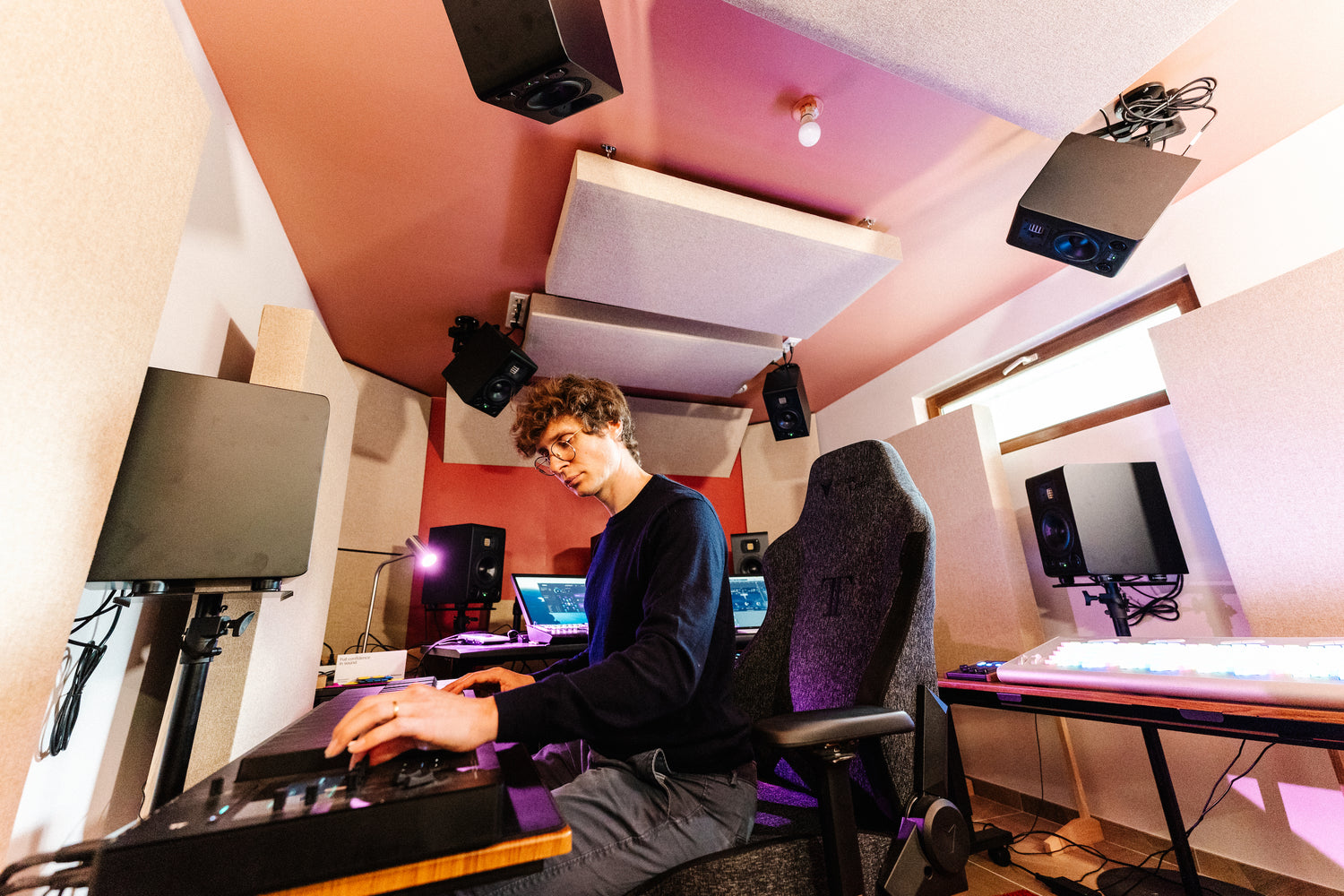
Are you new to Immersive Audio?
Check our extensive guide and let mastering engineer and industry veteran Adam Kagan guide you through all the key considerations when building an immersive audio-ready studio:
- Room setup and speaker placements
- Monitoring
- Software, Hardware requirements
- Treatment and calibration
